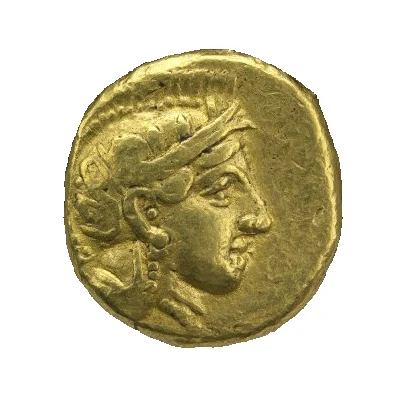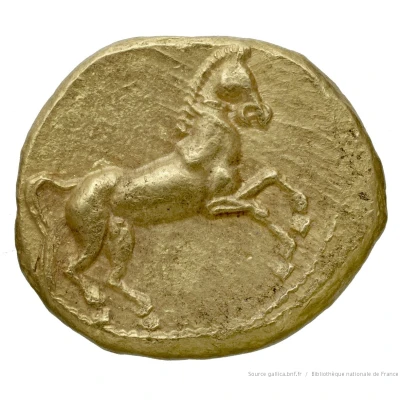


© British Museum
Daric - Teos 362 BC - 360 BC
| Gold | 8.27 g | - |
| Issuer | Egypt (ancient) |
|---|---|
| Pharaoh | Teos (362-360 BC) |
| Type | Standard circulation coin |
| Years | 362 BC - 360 BC |
| Value | 1 Daric (20) |
| Currency | Stater |
| Composition | Gold |
| Weight | 8.27 g |
| Shape | Round (irregular) |
| Technique | Hammered |
| Demonetized | Yes |
| Updated | 2024-10-09 |
| Numista | N#77616 |
|---|---|
| Rarity index | 97% |
Reverse
Owl with inscription to the right
Script: Greek
Lettering: ΤΑΩ
Edge
Rough
Comment
http://www.britishmuseum.org/research/collection_online/collection_object_details.aspx?objectId=1273458&partId=1&searchText=djedher&page=1http://www.cngcoins.com/photos/CNR/CNG_CNR_2014-04.pdf
https://www.academia.edu/3837681/Les_monnaies_en_or_aux_types_hi%C3%A9roglyphiques_nwb_nfr
Interesting fact
One interesting fact about the Daric - Teos coin is that it was used as a form of currency in ancient Egypt during the reign of King Artaxerxes III, who ruled from 362 BC to 360 BC. The coin was made of gold and weighed 8.27 grams, which was a significant amount of gold for a coin at that time. The coin was also adorned with an image of the king, which symbolized his authority and power. Despite being over 2,000 years old, some of these coins have survived to this day and are highly prized by collectors and historians.



